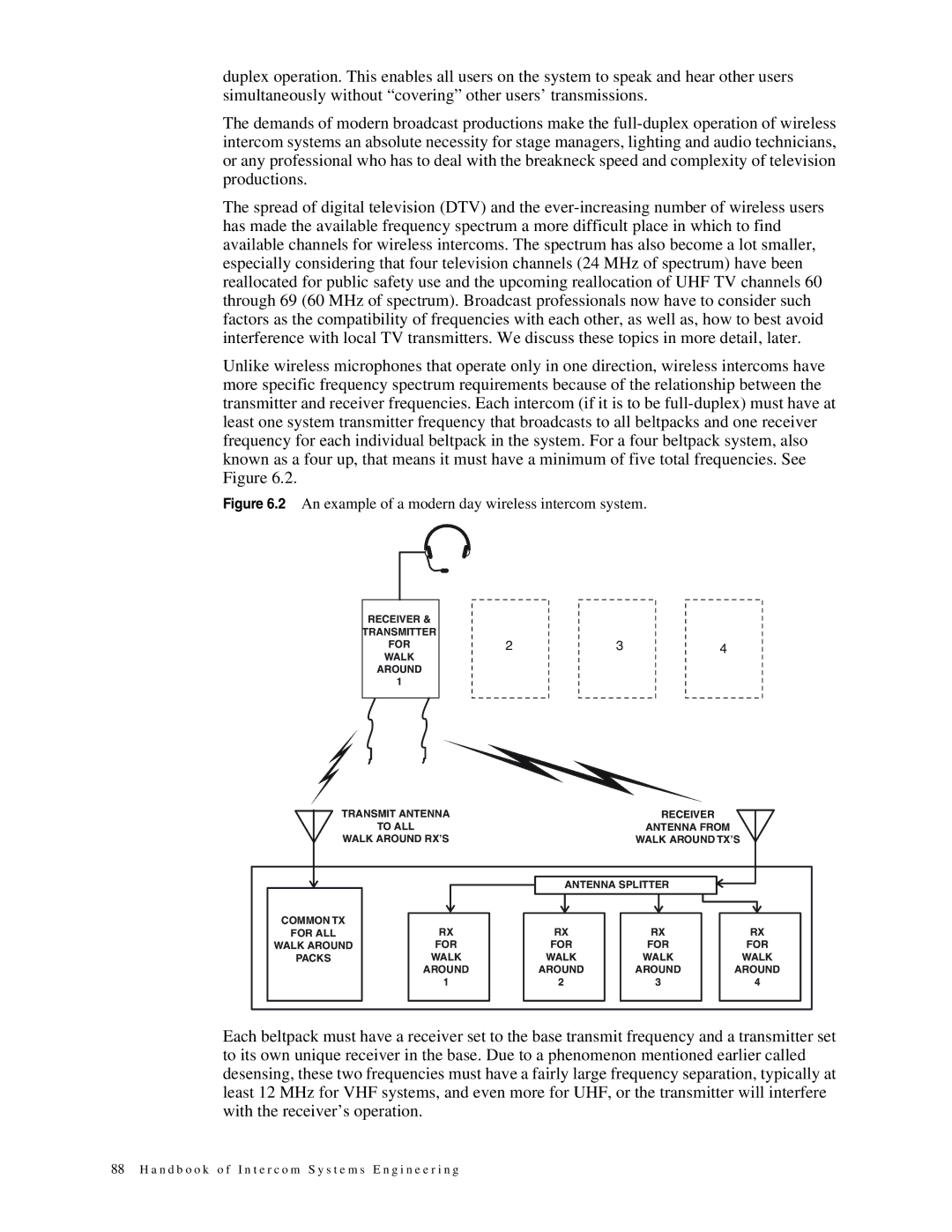
duplex operation. This enables all users on the system to speak and hear other users simultaneously without “covering” other users’ transmissions.
The demands of modern broadcast productions make the
The spread of digital television (DTV) and the
Unlike wireless microphones that operate only in one direction, wireless intercoms have more specific frequency spectrum requirements because of the relationship between the transmitter and receiver frequencies. Each intercom (if it is to be
Figure 6.2 An example of a modern day wireless intercom system.
RECEIVER &
TRANSMITTER
FOR
WALK
AROUND
1
2 | 3 | 4 |
TRANSMIT ANTENNA | RECEIVER |
TO ALL | ANTENNA FROM |
WALK AROUND RX’S | WALK AROUND TX’S |
|
| ANTENNA SPLITTER |
| |
COMMON TX | RX | RX | RX | RX |
FOR ALL | ||||
WALK AROUND | FOR | FOR | FOR | FOR |
PACKS | WALK | WALK | WALK | WALK |
| AROUND | AROUND | AROUND | AROUND |
| 1 | 2 | 3 | 4 |
Each beltpack must have a receiver set to the base transmit frequency and a transmitter set to its own unique receiver in the base. Due to a phenomenon mentioned earlier called desensing, these two frequencies must have a fairly large frequency separation, typically at least 12 MHz for VHF systems, and even more for UHF, or the transmitter will interfere with the receiver’s operation.
88 H a n d b o o k o f I n t e r c o m S y s t e m s E n g i n e e r i n g
